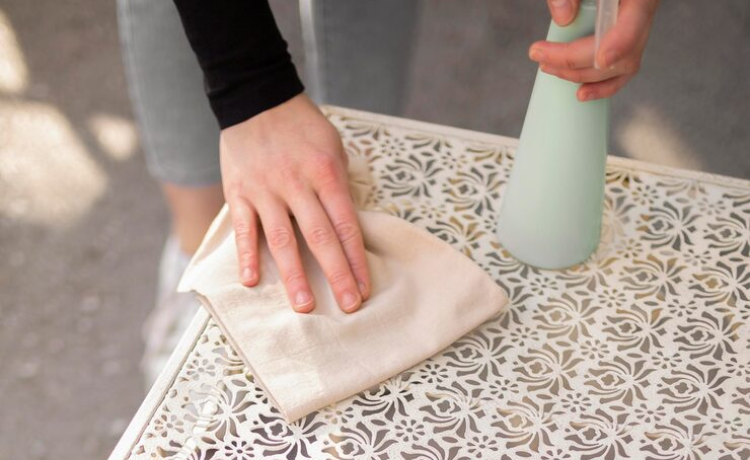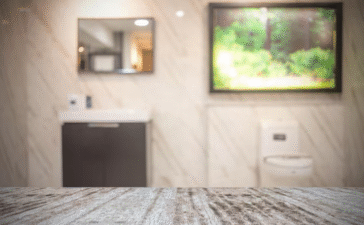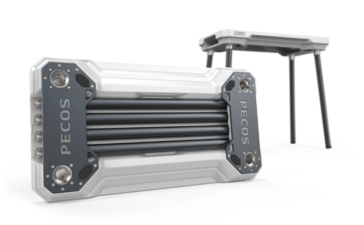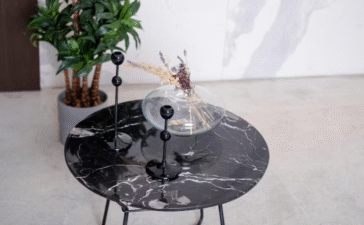Composite decking has revolutionized outdoor living spaces, offering homeowners a durable, attractive alternative to traditional wood decking. With over 12 million composite deck boards sold annually in North America, these innovative materials have become the go-to choice for those seeking low-maintenance outdoor solutions.
However, the term “low-maintenance” doesn’t mean “no-maintenance.” Regular composite deck cleaning remains essential for preserving both the aesthetic appeal and structural integrity of your investment. Proper deck maintenance prevents the buildup of mold, mildew, and organic debris that can lead to surface deterioration and costly repairs.
The benefits of consistent composite deck care extend far beyond appearance. Regular cleaning can extend your deck’s lifespan by up to 30%, according to industry research, while preventing common issues like surface staining and structural damage. Understanding how to properly wash your composite deck ensures you’ll enjoy your outdoor space for decades to come.
Understanding Composite Decking Materials and Care Requirements
Composite decking combines wood fibers with recycled plastic polymers, creating a material that resists rot, insects, and weathering better than traditional lumber. Modern composite boards typically contain 50-95% recycled materials, making them an environmentally conscious choice for outdoor construction.
Unlike wood decks that require annual staining or sealing, composite decking materials maintain their color and structural integrity with minimal intervention. The polymer coating on most composite boards creates a protective barrier against moisture and UV damage, significantly reducing maintenance requirements compared to natural wood alternatives.
Despite their durability, composite decks still accumulate dirt, organic debris, and environmental pollutants that can compromise their appearance and longevity. The textured surface of many composite boards can trap particles and provide ideal conditions for mold and mildew growth if not properly maintained.
Understanding your specific composite decking brand and composition is crucial for proper care. Different manufacturers use varying ratios of wood fiber to plastic, with some incorporating protective caps or specialized coatings that require specific cleaning approaches.
Step-by-Step Composite Deck Cleaning Process
Effective composite deck washing follows a systematic approach that removes debris while protecting the deck surface from damage. Begin by clearing all furniture, planters, and decorative items from the deck area to ensure complete access to all surfaces.
Regular Sweeping and Debris Removal
Start your cleaning routine by thoroughly sweeping the entire deck surface with a stiff-bristled broom. Pay particular attention to spaces between boards where leaves, dirt, and organic matter tend to accumulate. Remove any standing water from the deck surface, as prolonged moisture exposure can lead to mold and mildew development.
Preparing Your Cleaning Solution
Create an effective yet gentle cleaning solution by mixing warm water with mild dish soap at a ratio of approximately one tablespoon of soap per gallon of water. This combination effectively breaks down dirt and grime without the harsh chemicals that can damage composite materials. For routine maintenance, this simple solution proves sufficient for most cleaning tasks.
Surface Scrubbing Techniques
Apply your cleaning solution to small sections of the deck, working from one end to the other in manageable areas. Use a soft-bristled brush or non-abrasive scrubbing pad to gently work the solution into the deck surface, following the grain pattern of the composite boards. Avoid circular scrubbing motions that can create visible wear patterns on the deck surface.
Thorough Rinsing Process
After scrubbing each section, rinse thoroughly with clean water to remove all soap residue. Soap buildup can create a film on composite surfaces that attracts dirt and creates slippery conditions. Ensure complete removal of cleaning solution from between deck boards and any crevices where residue might accumulate.
Pressure Washing Composite Decking: Best Practices and Precautions
Pressure washing can effectively clean composite decking when performed correctly, but improper technique can cause irreversible damage to deck surfaces. Most composite decking manufacturers recommend pressure settings below 1500 PSI for safe cleaning, significantly lower than pressures used for concrete or masonry surfaces.
Recommended Pressure Settings and Equipment
Use a wide-angle nozzle (25-40 degrees) positioned at least 12 inches from the deck surface to distribute pressure evenly and prevent surface gouging. Begin with the lowest effective pressure setting and gradually increase only if necessary for stubborn stains or debris removal.
Safety Considerations
Always wear appropriate safety equipment, including eye protection and non-slip footwear, when pressure washing composite decks. Test your pressure washer on an inconspicuous area first to ensure the settings won’t damage your specific composite material. Maintain consistent distance and movement speed to prevent creating streaks or pressure marks on the deck surface.
Alternative Cleaning Methods
For homeowners concerned about pressure washing risks, garden hose attachments with adjustable spray patterns provide effective cleaning power without the potential for surface damage. These tools offer sufficient water pressure for most routine cleaning tasks while maintaining better control over the cleaning process.
Critical Mistakes That Damage Composite Decking
Avoiding Harsh Chemical Cleaners
Bleach, ammonia-based cleaners, and other strong chemicals can break down the polymer binders in composite materials, leading to surface deterioration and discoloration. These harsh substances can also strip protective coatings from capped composite boards, leaving them vulnerable to moisture infiltration and UV damage.
Following Manufacturer Guidelines
Each composite decking brand has specific care recommendations based on their unique material composition and manufacturing process. Ignoring these guidelines can void warranties and lead to premature deck failure. Always consult your deck manufacturer’s care instructions before beginning any cleaning routine.
Selecting Appropriate Cleaning Tools
Steel brushes, coarse abrasives, and pressure washers exceeding manufacturer recommendations can permanently scratch or gouge composite surfaces. Once damaged, these marks cannot be repaired and may require board replacement. Stick to soft-bristled brushes and non-abrasive cleaning pads for all routine maintenance.
Managing Water Pressure
Excessive pressure from power washers or even high-pressure garden hose nozzles can force water beneath the deck surface or between board joints, potentially causing structural damage or creating conditions for mold growth in areas where proper drainage cannot occur.
Optimal Cleaning Frequency for Composite Decks
Environmental Factors Affecting Cleaning Needs
Decks located in heavily wooded areas or regions with high humidity require more frequent cleaning than those in open, arid environments. Tree coverage increases organic debris accumulation, while humid conditions promote faster mold and mildew growth on deck surfaces.
Seasonal Maintenance Schedule
Spring cleaning should focus on removing winter debris and preparing the deck for heavy use season. Fall maintenance involves clearing leaves and organic matter before winter weather sets in. Monthly light cleaning during active use periods helps maintain appearance and prevents stain development.
Usage-Based Cleaning Guidelines
High-traffic decks used for frequent entertaining or cooking require more regular attention than occasionally used outdoor spaces. Areas around grills, dining tables, and high-traffic pathways may need weekly spot cleaning during peak use seasons.
Spot Cleaning Versus Deep Cleaning
Address spills, stains, and localized debris immediately to prevent permanent marking. Comprehensive deep cleaning should occur at least twice annually, with additional sessions based on environmental conditions and deck usage patterns.
Removing Specific Stains from Composite Decking
Mold and Mildew Treatment
Create a solution using equal parts white vinegar and warm water for effective mold and mildew removal. Apply the solution to affected areas and allow it to sit for 10-15 minutes before gentle scrubbing with a soft brush. Vinegar’s natural acidity breaks down mold spores without damaging composite materials.
Oil and Grease Stain Removal
Fresh oil and grease stains respond well to immediate treatment with dish soap and warm water. For set-in grease stains, apply a paste made from baking soda and water, allow it to sit for several hours, then scrub gently and rinse thoroughly. Commercial degreasers specifically formulated for composite materials provide additional cleaning power for stubborn stains.
Rust Stain Treatment
Rust stains typically result from metal furniture or hardware contact with deck surfaces. Mix equal parts white vinegar and water, apply to rust stains, and allow to sit for 20-30 minutes before scrubbing. For persistent rust marks, oxalic acid-based cleaners designed for composite materials offer more aggressive treatment options.
Immediate Stain Response
The key to successful stain removal lies in prompt action. Fresh stains are significantly easier to remove than those allowed to set into the composite material. Keep basic cleaning supplies readily available for immediate response to spills and accidents.
Long-Term Composite Deck Protection Strategies
Preventive Maintenance Practices
Regular sweeping prevents debris accumulation that can trap moisture and create staining conditions. Weekly removal of leaves, dirt, and organic matter significantly reduces the frequency of deep cleaning requirements and extends deck appearance longevity.
Weather Protection Measures
While composite decking resists weather damage better than wood, protective measures can further extend deck life. Deck covers or awnings reduce UV exposure and minimize debris accumulation during storms or high winds.
Proper Drainage Management
Ensure adequate drainage around your composite deck to prevent standing water accumulation. Poor drainage can lead to moisture-related issues even with composite materials. Check and clear drainage systems regularly, especially after heavy rains or snow melt.
Vegetation Management
Keep trees, shrubs, and other vegetation trimmed back from deck areas to improve air circulation and reduce organic debris deposition. Overhanging branches can drop leaves, sap, and other materials that create cleaning challenges and potential staining issues.
Frequently Asked Questions
What is the best cleaner for composite decking?
Mild dish soap mixed with warm water provides the safest and most effective cleaning solution for routine composite deck maintenance. This combination removes dirt and grime without damaging composite materials or voiding manufacturer warranties.
Can I use bleach on my composite deck?
Bleach should never be used on composite decking as it can break down the polymer binders and cause permanent discoloration or surface damage. Stick to manufacturer-recommended cleaners or mild soap solutions for safe deck care.
How do I know if my pressure washer setting is too high?
If you notice surface gouging, texture changes, or water forcing its way between deck boards, your pressure setting is too high. Start with settings below 1500 PSI and maintain at least 12 inches distance from the deck surface.
Why does my composite deck get slippery when wet?
Soap residue buildup or algae growth can create slippery conditions on composite decks. Ensure thorough rinsing after cleaning and address any green algae growth with appropriate cleaning solutions designed for composite materials.
How long does it take for a composite deck to dry after washing?
Most composite decks dry within 24-48 hours after washing, depending on weather conditions, humidity levels, and air circulation. Ensure complete drying before replacing furniture or resuming normal deck activities.
Can composite decking be permanently stained?
While composite decking resists staining better than wood, certain substances like red wine, rust, or oil can cause permanent discoloration if not addressed promptly. Immediate cleaning prevents most staining issues.
Should I hire a professional for composite deck cleaning?
Professional cleaning services can be beneficial for extensive staining, large deck areas, or when homeowners lack the time or equipment for proper maintenance. However, routine cleaning can easily be performed by most homeowners with basic equipment.
Protecting Your Investment Through Proper Care
Maintaining your composite deck through regular washing and care represents a small investment in time that pays significant dividends in appearance, safety, and longevity. The systematic approach outlined in this guide ensures your deck remains an attractive, functional outdoor living space for decades.
Remember that consistency in maintenance proves more effective than intensive periodic cleaning sessions. Establishing a regular cleaning routine prevents the accumulation of debris and stains that require more aggressive treatment methods. Your composite deck represents a significant investment in your home’s value and your family’s outdoor enjoyment.
By following these proven maintenance practices and avoiding common cleaning mistakes, you’ll preserve both the beauty and structural integrity of your composite decking investment. Take the time to understand your specific deck material requirements and establish a maintenance routine that fits your lifestyle and environmental conditions.











